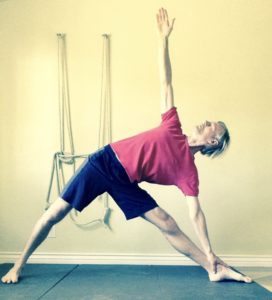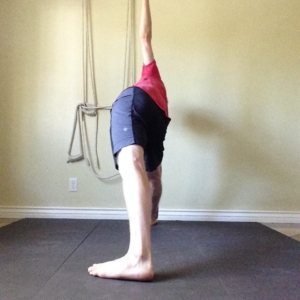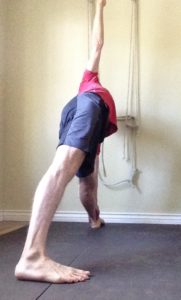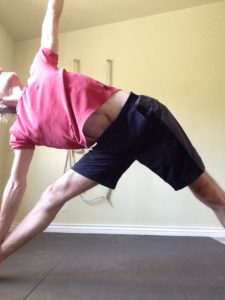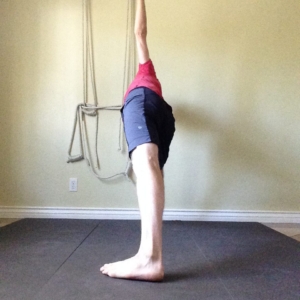The Best Breathing for Reducing Pain and Stress
When working with our clients one of the first things we check is their breathing pattern. This is because the way a person breathes can have a big impact on their health, including the health and function of the musculo-skeletal system. Much of the impact of breathing on our health has to do with the role of our diaphragm.
The Diaphragm during Respiration
There are many ways to breathe but the most effective, efficient and relaxing way to breathe involves using our diaphragm. The diaphragm is a dome-shaped muscle that spans the lower border of our rib cage. On inhalation, as the diaphragm contracts, it flattens and moves downward. This downward motion creates a vacum in the chest, helping to pull air into the lungs. When the diaphragm relaxes it moves upward, back into its dome shape, and this upward motion helps us to exhale.
Intra-abdominal Pressure and the Stabilizing Role of the Diaphragm
The downward motion of the diaphragm also creates pressure in the abdomen. This pressure is called “intra-abdominal pressure” and is important for facilitating a stabilizing response in the muscles of our abdomen, low back and pelvis. This highlights the dual role of the diaphragm. Under optimal circumstances it acts as a facilitator of both respiration and muscle-skeletal stabilization.
Often people are taught diaphragmatic breathing by lying down and breathing into the belly, inflating it toward the ceiling. Although this may be a good way to get started, it is an approach which focuses only on the respiratory role of the diaphragm and fails to address its crucial role in stabilizing the trunk and pelvis.
Experiencing Diaphragmatic Breathing and Intra-abdominal Pressure
For the diaphragm to perform optimally in both of it’s roles it is essential that its downward motion be symetrical and that the pressure it creates in the abdomen be distributed evenly. To experience this even distribution of intra-abdominal pressure for yourself, place your hands around the abdomen just below the lower ribs, making contact with the front, sides and back of your body. Your diaphragm sits just above where your hands are touching. Now inhale and feel how the pressure created in your abdomen is pushing gently into your hands.
True diaphragmatic breathing creates intra-abdominal pressure that expands outward into the full circumference of the abdomen. When you breathe in with your hands wrapped around your abdomen, check and see if you feel the pressure moving in all directions. If you feel most or all of the pressure pushing into your belly, then on subsequent breaths try to gently, but consciously, redistribute the pressure into every place your hands are touching, especially into the sides of your waist and into the back.
Another technique for improving diaphragmatic breathing and intra-abdominal pressure involves tying a theraband or a stretchy cloth around your lower ribs and feeling your inhale touch the whole circumference of the lower ribcage. Here you can feel the intercostal muscles between your ribs move. The intercostals assist the diaphragm in playing both its roles and are an important source of load and mobilization of the rib cage, helping to keep these bones healthy and mobile.
Intra-abdominal Pressure and the Pelvic Floor
As I mentioned earlier, when we are truly breathing diaphragmatically the downward motion of the diaphragm will be symetrical and create an even distribution of pressure in the abdominal cavity. But it doesn’t stop there! In fact one important benefit of diaphragmatic breathing is its affect on the pelvic floor. This is because true diaphragmatic breathing and optimal intra-abdominal pressure will move directly downward toward the pelvic floor, loading the pelvic floor muscles and soliciting a response from those muscles that maintains their strength and responsiveness.
To sense the intra-abdominal pressure in your pelvis, place your hands on the front of your belly below your umbilicus (belly button) and above your pubic bone and take a breath. You should feel a gentle pressure increase here. You may also begin to sense a gentle pressure in the floor of your pelvis.
Other Benefits of Diaphragmatic Breathing
Another reason the direction our diaphragm moves is so important is that it helps pull air into the lowest lobes of your lungs. Since the lungs are narrow at the top and wider at the bottom, blood flow into the lower lobes is greater than into the upper lobes and therefore breathing diaphragmatically will allow for more oxygen transfer into the blood. With a big chest breath we are actually taking in less oxygen than if we simply take a small but healthy diaphragmatic breath!
Diaphragmatic breathing also has benefits to our nervous system. The para-sympathic nervous system (rest and digest) is activated by relaxed, diaphragmatic breathing while the sympathetic (fight or flight) is activated by chest breathing. Again, for healthy breathing that big chest breath is not always what we want. It is actually preparing our body to ramp up, promoting a stress response rather than alleviating it.
Diaphragmatic breathing can also help alleviate back pain and reduce back tension. When breathing diaphragmatically, the intra-abdominal pressure solicits a response in the abdominal and lower trunk muscles that gently unloads the spinal joints and strengthens the abodminal muscles. These muscles get a gentle massage and workout just by breathing correctly!
Breathing through Your Nose is Essential
Finally, to get the most out of diaphragmatic breathing it is essential to breathe in and out of your nose. Mouth breathing is shallow and will promote lifting the chest up in lieu of the diaphragm moving down. Since ALL of the benefits of diaphragmatic breathing hinge on the symetrical downward movement of the diaphragm and the even distribution of intra-abdominal pressure then breathing through the nose is key in reaping these benefits.
For guided instruction on the basics of diaphragmatic breathing, check out this video.

